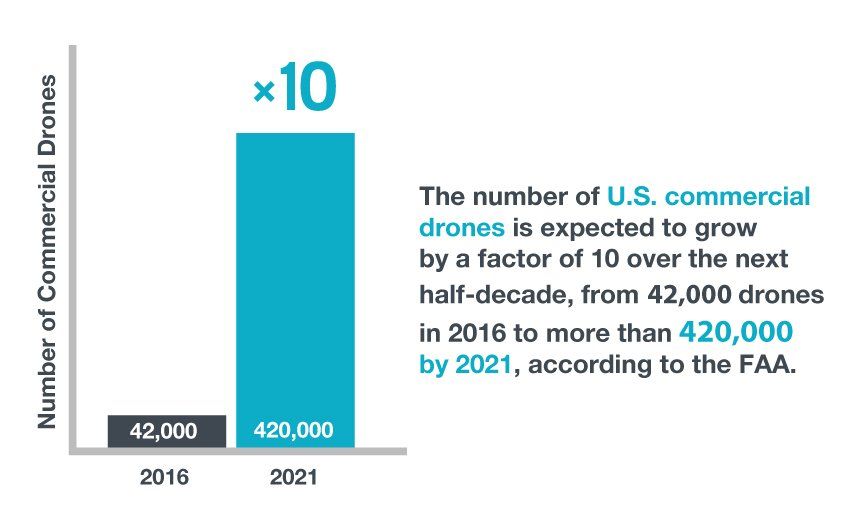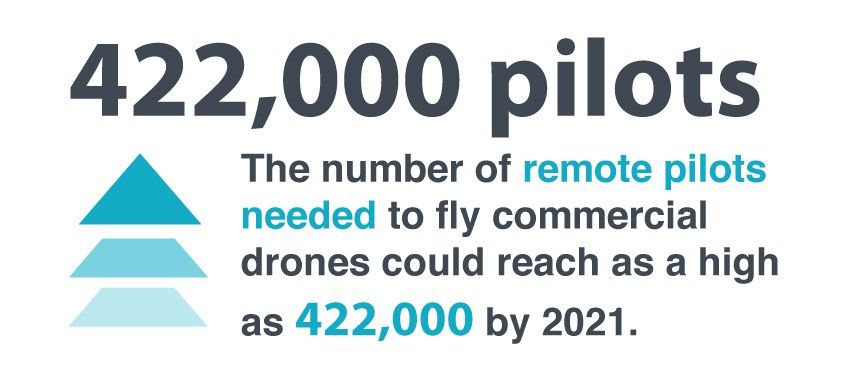What About Drones and Newsrooms?
Discussions around drones entering the journalism industry has been around for a while. The shift in using different tools to capture and share news instantaneously, as the online experience evolves, has been rapid in the last few years. Utilizing social media, live video posts and artificial intelligence seems easier compared to using drones.
Drones: Immersive storytelling
Journalism and news has always been about being at the right place at the right time to report on real stories, statements and events locally and nationally. However, the medium in which news is being reported has changed and is constantly evolving with technological advances. Technology helps news become multi-dimensional and provide more depth and perspective.
Specifically the usage of drones in more newsrooms has opened ways for reporters to capture more details than ever before. They can survey the damage of an explosion or a disaster area by documenting and showing still images and videos. Live streaming of events and stories, such as annual festivals, concerts, local press conferences, to affects of hurricanes and natural disasters in communities. Drones can capture high resolution images and videos from multiple perspectives and offer a better analysis for viewers.
Drone Regulations
Before considering to incorporate the usage of drones in your newsroom, however, some important restrictions, regulations and certifications need to be evaluated and established. There has been long discussions on how the usage of drones violates many privacy considerations, as well as safety issues regarding the handling of the equipment.
The FAA has deemed the usage of drones in newsrooms as commercial use, although the debate has also brought up the First Amendment free press implications around this definition. This has provided specific restrictions and certifications to include journalists. The Small Unmanned Aircraft Rule – known as Part 107 – is an operator’s certificate and requires that the journalists pass a test covering basic of airspace. This has also brought about specific restrictions, which provided are followed, allow newsrooms to consider drone flights in reporting.
Operational Limitations – (taken from the FAA website)
- Unmanned aircraft must weigh less than 55 lbs. (25 kg).
- Visual line-of-sight (VLOS) only; the unmanned aircraft must remain within VLOS of the remote pilot in command and the person manipulating the flight controls of the small UAS.
- Small unmanned aircraft may not operate over any persons not directly participating in the operation, not under a covered structure, and not inside a covered stationary vehicle.
- Daylight-only operations, or civil twilight (30 minutes before official sunrise to 30 minutes after official sunset, local time) with appropriate anti-collision lighting.
- Must yield right of way to other aircraft
- Maximum groundspeed of 100 mph (87 knots).
- Maximum altitude of 400 feet above ground level (AGL) or, if higher than 400 feet AGL, remain within 400 feet of a structure.
- Wildfires, major league sports and national parks are off-limits.
- No careless or reckless operations.
- No carriage of hazardous materials.
- No person may act as a remote pilot in command or VO for more than one unmanned aircraft operation at one time.
An important procedure to consider as part of using drones for reporting and providing guidance to your readers, is to create an “About Drone Usage” section on your website. You can also have a pdf file upload that readers can read at any time. This should include your decision process and reasons for using the drone device. Specifically on the information gathered via images and video, who get to see and vet the data is important. What internal reporting and monitoring systems are place with certain sensitive information, as well as the boundaries set for when it should not be used or aired. Do not forget to regularly audit and track any new developments you have in place for using drones.
Drone Pilots
Careful employment and examination of the remote pilot candidates is vital to the success of drone usage in newsrooms. When providing direction to the pilots, newsrooms should consider obtaining adequate insurance for any damage or injury that may result during drone flights. Make sure that the drone is registered with the FAA at a cost of $5, which is valid for 3 years. Do not forget to obtain any necessary licensing for commercial use; which includes shooting photos and videos for a story.
Remote Pilot Certification and Responsibilities – (taken from the FAA website)
- Demonstrate aeronautical knowledge by either:
- Passing an initial aeronautical knowledge test at an FAA-approved knowledge testing center; or
- Holding a part 61 pilot certificate other than student pilot, complete a flight review within the previous 24 months and complete a small UAS online training course provided by the FAA.
- Be vetted by the Transportation Security Administration.
- Be at least 16 years old.
- Requires preflight inspection by the remote pilot in command.
- A person may not operate a small unmanned aircraft if he or she knows or has reason to know of any physical or mental condition that would interfere with the safe operation of a small UAS.
- A person operating a small UAS must either hold a remote pilot airman certificate with a small UAS rating or be under the direct supervision of a person who does hold a remote pilot certificate (remote pilot in command).
Pilots should have autonomy in their work processes and if certain flights are unnecessarily unsafe or questionable, the newsroom should follow the pilot’s decision. They should also be encouraged to keep track of any new regulations and requirements that might have been updated by the FAA. This can include the changes that occur in the sectional maps and flight restrictions. Specifically on the usage of the drone, pilots should be asked to make sure that they have completed their pre and post-flight inspections, inclusive of checking aircraft body, batteries, and motors. If any parts need to be replaced, original parts need to be used for keeping the safety and quality requirements.
The FAA will continuously find ways to regulate the new “Drone Age” as new technology develops, while discussions on the ethical usage of drones in newsrooms will persist. “There’s no shortage of negative headlines about drones. A lot of it is related to fear. But there’s so much potential good for what these things can do. There are clear advantages to using them.” – Greg Agvent, CNN AIR












